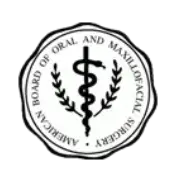Oral Surgery for Gum Disease: A Patient’s Guide
Gum disease can be an uncomfortable and even painful condition. Non-destructive gum disease is called gingivitis and is caused by excess bacteria, which builds up as plaque on your teeth. It can be caused by poor oral hygiene but may also be due to mouth shape or illness. If gingivitis goes untreated, it can become periodontitis. This type of gum disease can eventually eat away at the teeth and even the surrounding bones. An oral surgeon may need to perform one or more procedures to get your oral health back on track in instances like these.
Symptoms of Gum Disease
One of the earliest signs of gum disease is bad breath. Bacteria build up in pockets around your teeth or under the gums. This bacteria, if left unchecked, multiplies and causes an unpleasant smell to emanate from your mouth.
Excess bacteria can also make your gums swell and become inflamed. You may notice that your gums seem redder than usual. They may be sore or soft to the touch. You may also detect blood when brushing your teeth.
As gum disease progresses, you may notice that your gums seem to recede or that your teeth seem longer or larger. It may also seem like your gums are pulling away from your teeth, creating even more gaps where bacteria can hide and spread.
You may also start to experience more intense pain if the inflammation or infection starts to damage the soft tissues or even your teeth.
Preventing Gum Disease
The first line of defense against gum disease is oral hygiene. But, how do you know if your oral hygiene routine is up to par? Here are the steps you should be following every day to help prevent periodontitis or gingivitis:
- Brush your teeth every morning as bacteria can spread while you sleep.
- Brush your teeth every night to remove food particles and acids that build up during the day.
- Floss daily to remove food particles and bacteria from between the teeth.
- Use mouthwash if you can, ideally an antibacterial version.
- If you struggle to brush between your teeth, talk to your dentist about interdental brushes.
- You may use a toothpick to help remove particles from between the teeth, but use these with care as hard toothpicks can cause damage to the gums or teeth.
- Consider an electric toothbrush and make sure that you always brush along the gum line.
You can also help prevent gingivitis by stopping smoking and cutting down your alcohol consumption.
When To See an Oral Surgeon
You should speak to an oral surgeon about your options as soon as you notice any of the symptoms of gum disease. If gum disease has not progressed too far, they may recommend scaling and cleaning. This involves cleaning beneath the gum line to reduce plaque buildup. Deep scaling and root planing is another minor procedure that involves smoothing the surfaces of the teeth beneath the gum line. The smoother surface makes it harder for bacteria to embed and grow.
If you're experiencing pain, your teeth feel loose, or bleeding from the mouth is common, it's more urgent to see your oral surgeon. In these instances, periodontitis may have set in, and gum surgery may be a viable option. You must take action as gum disease is connected to heart disease and other major medical issues.
Treatments an Oral Surgeon May Perform
Your dental surgeon will examine you carefully and give you the options for treatment. The treatment offered depends largely on the severity of the gum disease.
Flap Surgery
During flap surgery, the surgeon manually lifts the gums away from the teeth. They then thoroughly clean the teeth and suture the gums back together, hopefully tightening them against the teeth to avoid pockets forming again.
Grafting of Bone or Tissue
Severe periodontitis can damage teeth and bones. If the bone around a tooth is damaged, you could lose the tooth. Bone grafting uses bone tissue from yourself or a donor to replace the damaged or destroyed bone and help the tooth grow stronger. Some oral surgeons may use artificial bone constructs for this procedure.
Guided Tissue Regeneration
When bone is destroyed, the gum can grow to fill the gap. This prevents the bone from healing itself and leaves the jaw and the teeth weaker than before. Guided tissue regeneration or GTR involves using mesh to stop the growth of new gum tissue. This encourages the bone to regrow instead.
Your oral surgeon will talk you through any procedure, including how to prepare and what to expect. You may need to stop taking certain medications before your procedure. You won't be able to smoke or drink alcohol for 24 hours before a procedure, and you will need someone to drive you home in case you are still under the effect of sedation.
Recovering From Oral Surgery
Recovery time depends on the procedure you have. Slight discomfort is normal, as is some swelling and inflammation as your gums recover from surgery. Talk to the surgeon about what painkillers you can take and how often. Avoid hard, sharp, or crunchy foods. You may need to use a special mouth rinse to keep the surgery area clean. Don't floss while recovering from gum surgery, and ask your surgeon if it's okay to start brushing your teeth again right away or if a wait time is needed.
Maintaining good oral hygiene can help prevent gum disease and other dental issues. However, there are still occasions when you develop irritation or inflammation of the gums, even with the best daily hygiene routine. Talk to a professional for advice and contact Oral Surgery DC for more information.






4.9 Stars
based on 134 reviews
5 Stars
based on 11 reviews
5 Stars
based on 11 ratings